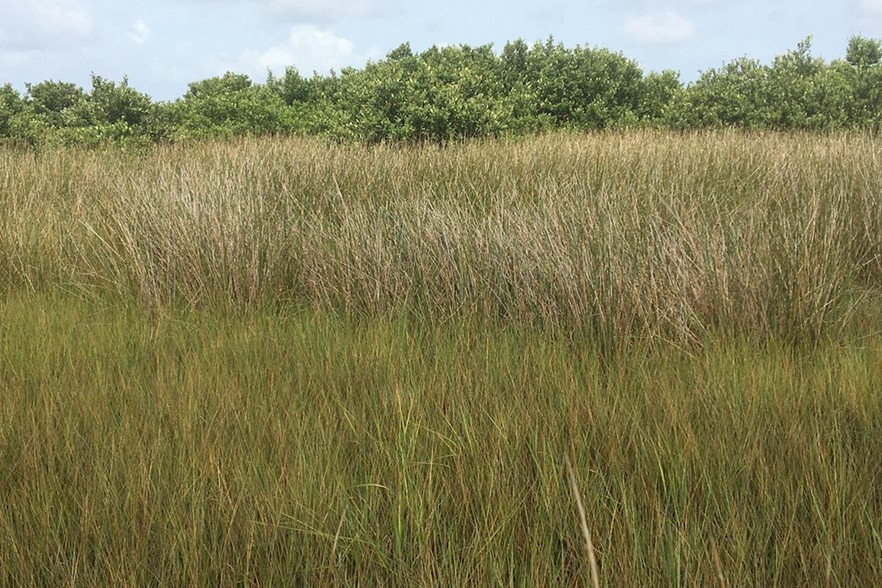When Dr. Breithaupt joined the FSU Coastal & Marine Lab he was surprised to learn that there were mangroves in the area. Like many, he shared the perception that mangroves weren’t found north of Cedar Key on the Gulf Coast of Florida. Much of his previous research has explored the importance of carbon in mangrove ecosystems, particularly the soils. So, when Dr. Steinmuller* joined Dr. Breithaupt’s lab as a Postdoctoral Scholar in August of 2021, one of the first projects they tackled was the question of how mangrove replacement of local saltmarshes might affect soil carbon storage in the Apalachicola Bay region. The findings of their research have just been published and include comparisons of soil carbon content beneath red and black mangroves as well as smooth cordgrass and black needle rush marshes on the region’s barrier islands. The answer for now is that there is no difference in the carbon content of soils beneath mangroves and salt marshes. But several factors suggest that, if winter freeze events in the region continue to be a rare event, mangrove growth and expansion are likely to increase soil carbon over time. The full research paper can be found here: https://www.frontiersin.org/articles/10.3389/ffgc.2022.852910/full
These changes have important implications for the region including cycling and sequestration of nutrients and pollutants in the region, habitat provision for animals, including fish and birds, and coastal protection from waves and storm surge.
*lead author


